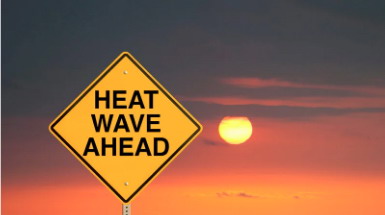
By Dr. Ambika Prasad Nanda, Head, Corporate Social Responsibility, Tata Steel, Odisha, India
The world is experiencing a significant increase in extreme heat that can be attributed to an increase in average global surface temperature. Within a period of 150 years, the global surface temperature has increased by about 0.3 to 0.6°C, and the increase of temperature has fastened in post-1975 years. Data confirms that the frequency and duration of heatwaves have increased significantly over the last 50 years. In the United States, heatwaves already killed more people during a typical year than floods, tornadoes and earthquakes combined. There has been a remarkable run of record-shattering heatwaves in recent years, from the Russian heatwave of 2010 that set forests ablaze to the historic heatwave in Texas leading to critical drought conditions, claiming huge economic and resource loss in 2011. 2003 European heatwave claiming 70,000 lives from all over Europe to chronicle heatwaves shattering the life and economy of the Indian subcontinent within the last 25 years is a matter of great concern. Economically poor and marginalized sections of India are the worst victims of heatwaves. Extreme temperatures generating a number of ripple effects like heatwaves, drought, forest fire, and drying up the water bodies to mention a few have a tremendous impact on the life and economy of the country. Data shows that extreme temperatures, agricultural failure, and labour migration moves in the same direction.
Heatwave is an atmospheric condition in which hot and humid days consecutively prevail for a long period of time. World Meteorological Organization defines a heatwave as five or more consecutive days during which the daily maximum temperature exceeds the average maximum temperature by five degrees Celsius. If the maximum temperature of any place continues to be more than 45° C consecutively for two days, it is termed a heatwave condition. There will be no harm to the human body if the environmental temperature remains at 37° C. Whenever the environmental temperature increases above 37° C, the human body starts gaining heat from the atmosphere. If humidity is high, a person can suffer from heat stress disorders even with the temperature at 37°C or 38°C.
Temperature beyond a certain threshold limit along with high humidity rate is the main reason behind the sufferings. In the coastal area humidity is high during the summer season. Tremendously high temperatures and high humidity lead to excessive sweating in the human body. The sweat won’t dry on the skin to give it a cooling effect; on the contrary it gets vaporized due to atmospheric temperature leading to dehydration of the body. It is not only the high temperature but the combination of heat and humidity that makes matters worse. Sometimes the condition proves to be fatal.
The systems in the human body that enable it to adapt to heat become overwhelmed. When a person is exposed to heat for a very long time, the first thing that shuts down is the ability to sweat. It is known that when perspiration is dried by the air there is a cooling effect on the body. Once a person stops perspiring, in very short order, a person can move from heat exhaustion to heat stroke.
During the transition from heat exhaustion to heat stroke, the body begins perspiring profusely, and when that shuts down, the body becomes very hot. Eventually, that begins to affect the brain, and that’s when people begin to get confused and lose consciousness. As the body temperature increases very rapidly, the central nervous system and circulatory system are impacted. In places where there have been prolonged heat exposures, there is probably a broad impact on many organ systems.
High temperatures not only increase the risk of mortality, they also increase the incidence of morbidity. If the temperature remains elevated overnight, then the body doesn’t get the respite that it needs. This leads to other kinds of heat-related diseases like heat rash accompanied by acute inflammation and blocked sweat ducts. Continuation of heat rash for a duration of time leads to the development of chronic dermatitis a secondary bacterial infection. Heat syncope is another kind of heat-related disease. It happens because of intense sweating leading to dehydration followed by peripheral vasodilatation and reduced venous blood return in the face of decreased vasomotor control. Management of heat syncope consists of cooling and rehydration of the patient using oral rehydration therapy.
Heat cramps are painful, brief muscle cramps that occur during or after exercise or a heavy load of work in a hot environment. Muscles may spasm or jerk involuntarily. Cramping may also be delayed and occur a few hours later. They are caused by a deficiency in electrolytes and are treated by rehydrating with fluids through the mouth or intravenously (IV).
Heat exhaustion is considered to be the forerunner of heat stroke. It may even resemble heat stroke, with the difference being that the neurological functions remain intact. It is a medical emergency that caused by the loss of water and electrolytes through sweating. Symptoms include nausea, dizziness, irritability, headaches, thirst, weakness, high body temperature, excessive sweating, and decreased urine output. Heat stroke is more severe and requires medical attention—it is often accompanied by dry skin, a body temperature above 103 degrees Fahrenheit, confusion and sometimes unconsciousness.
The rising temperature and the frequency of the heatwaves are looming large over human society, and many lives are lost because of ignorance about the impact of heatwaves. This is the most opportune time to make the people aware and build appropriate health care facilities to save the lives of the people.
Disclaimer: The views expressed in this piece are those of the author/s and do not necessarily reflect the views or policies of AIDMI.